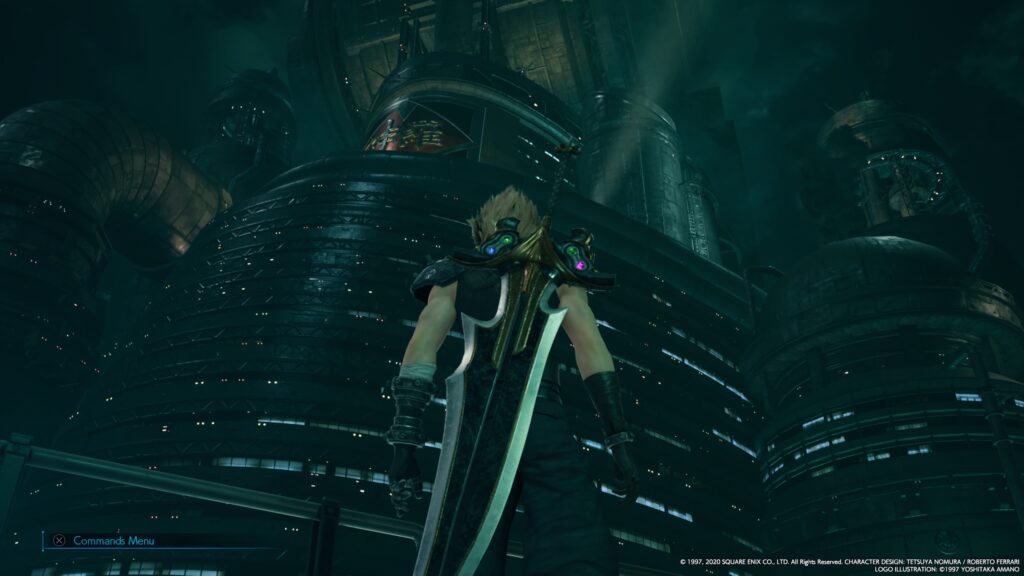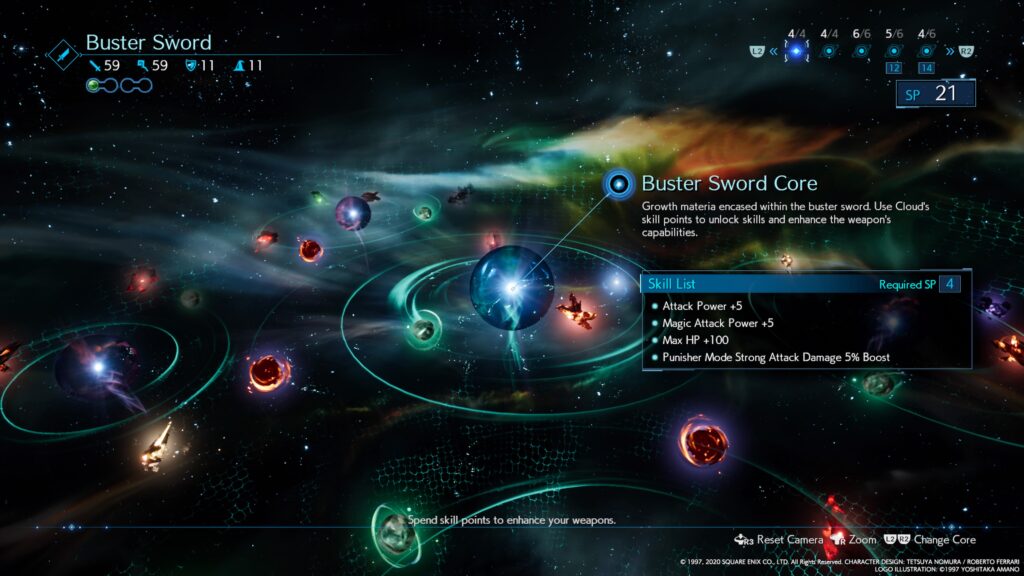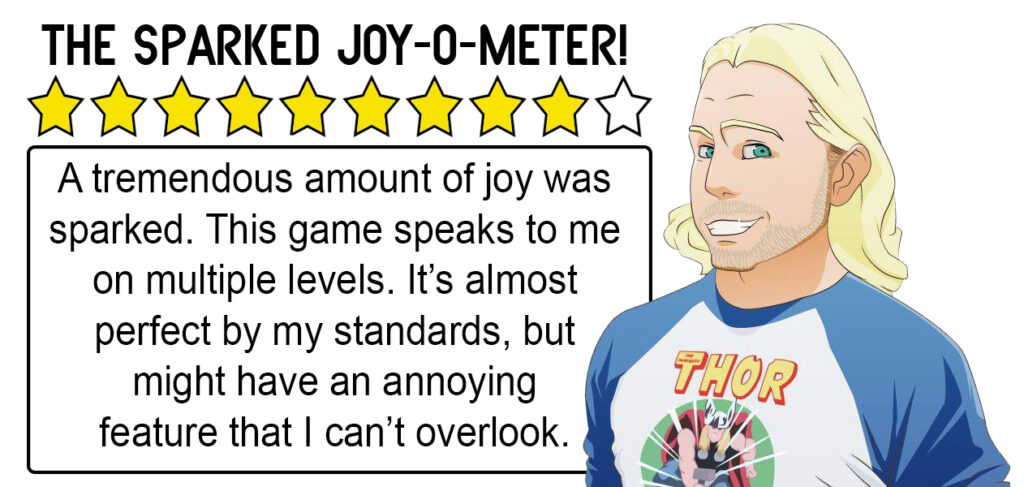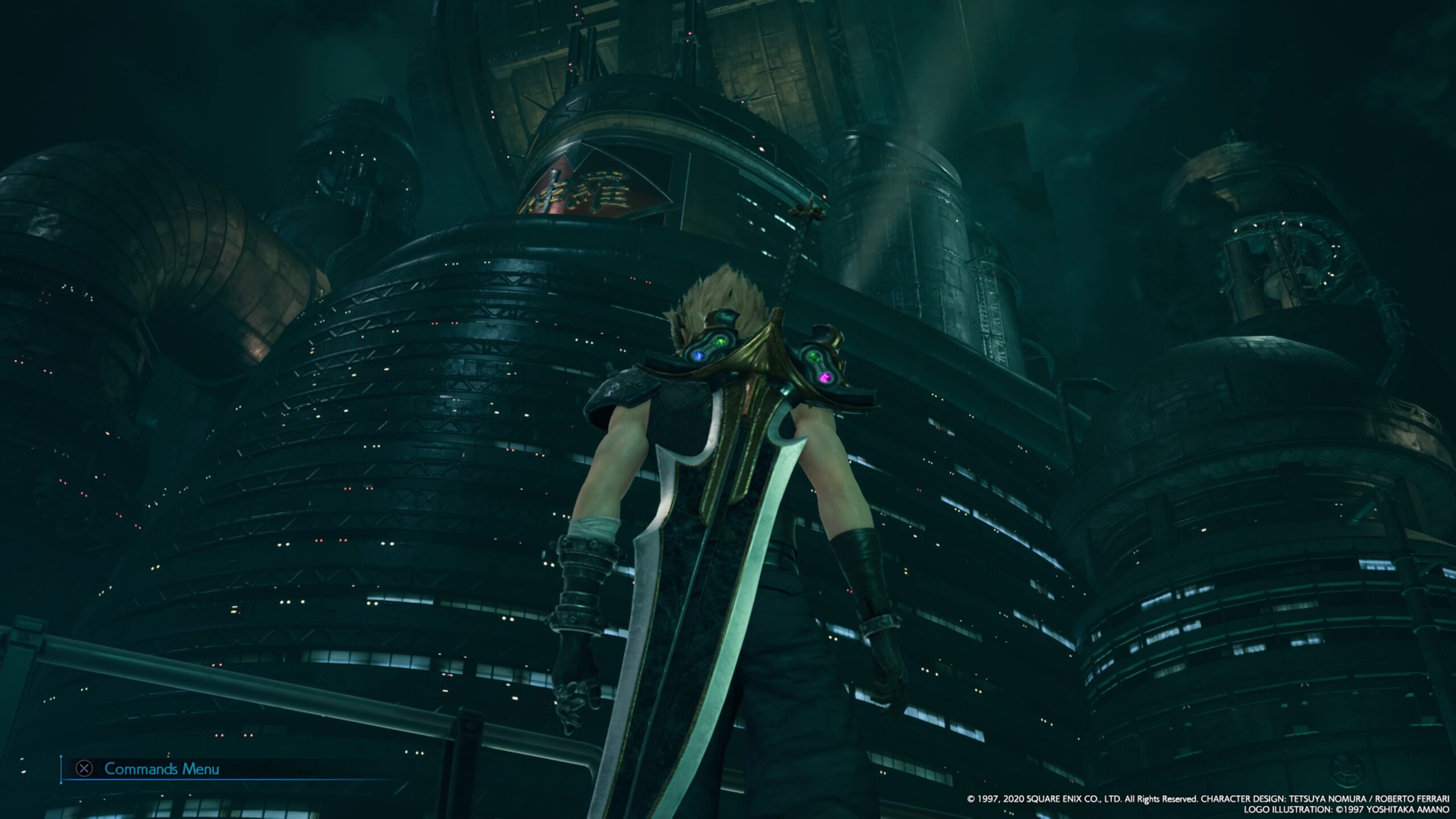Final Fantasy VII Remake

Final Fantasy VII Remake
I, uh, guess we’re going to be here for a while…
Testing. Testing. Is this thing on? The domain seems to be updated. SSL was recertified. Hey, I even see some comments! Huh. Everything seems to be working properly. Guess we can take the tarp off this site. 2020 turned into quite the ordeal. Suffice it to say, like millions, I was more than a little distracted from going through my video game library to see if there were any hidden gems waiting to be discovered. My research also prevented me from completely committing to games that were not visual novels, although I am happy to report that 1) I can certainly fill you in on some of the best visual novels (or hybrids) I discovered during that span if you are interested, and 2) said research seems to be progressing swimmingly. (As an aside, rediscovering the importance of anime in the media scholarship landscape was fascinating and perhaps a boon to my teenage self, but that’s a discussion for another day.) Now that I’m caught up with those responsibilities, I can begin to transition back to other video game genres. Further, now that the Colorado Rockies traded Nolan Arenado, I feel that I can convert the energy that I would have invested in baseball into curating my video game collection. So, with the blog coming back, why not start with something bound to turn some heads or raise some eyebrows? I’m talking about Final Fantasy 7 Remake.
The original Final Fantasy VII was a landmark game in just about every way imaginable; everyone has a story for how, when, and where they were drawn to one of the best RPGs ever created. My story occurred in a fall 1997 weekend. As a 7th grader wrestling with that very thin line between “Mark is cool” and “Mark is a huge dork,” I was easily drawn to Japanese anime and video games. 1997 was a pretty monumental year in general in terms of my media consumption thanks to games like Chrono Trigger, Final Fantasy III (VI), and Earthbound. Japanese anime was also gaining a foothold in the West thanks to Saturday morning blocks on channels like Sy-Fy. On one fateful night, I rented Akira for, I dunno, probably the second time. I thought I was so cool that I had in my (temporary) possession an anime that my parents would have grounded me for if they actually knew its story. One of my few friends who shared my hobbies gave me a call and asked what I was up to. I told him I had Akira. He responded, “Oh, cool. We have Final Fantasy VII.” Keep in mind that I was still rocking RPGs on the Super Nintendo at this point. I had played the Sony PlayStation before, but this was the first time a game I had truly wanted to play and one that would ultimately lead me down my current trajectory came into focus. I spent the night at his house. We didn’t watch Akira.
Over the next few months, the Sony PlayStation was the only thing I could think about. I collected Star Wars figures at the time, but I was due for a video game console upgrade that holiday season. Hell, it was probably one of the few Christmases where I was emphatic about what I wanted and made my request known: “I wish for a Sony PlayStation and Final Fantasy VII.” As is usually the case during junior high, the weeks leading up to winter break took nine years. When break arrived, we immediately traveled to Texas to spend a week with my grandparents. I was initially hopeful that my Christmas wishlist would come true, but with each passing day, I became more pessimistic. For example, while visiting a Texas store in hopes of dropping any last-minute clues to my parents in case they didn’t catch on, it was apparent that they sold out of both PlayStations and Final Fantasy VII. By Christmas Eve, I wasn’t sure what to expect and my mom eventually said rather cryptically, “They were really hard to find.” I took that to mean I would have to wait for a PlayStation, but it turned out to be a premonition more than a request to temper my expectations. The following morning, a Sony PlayStation sat under the Christmas tree. I was overjoyed. I didn’t see a copy of Final Fantasy VII, but that was okay. I would just get it when I returned home. However, there was a new wrinkle because next to the PlayStation was a carefully wrapped present from my maternal grandmother. Grandma hooked me up with a copy of the game and a brand spanking-new memory card. Final Fantasy VII became my first PlayStation game and I was off to the chocobo races.
Contrary to what you might be thinking, I purchased Final Fantasy VII Remake when it launched. I even got the Deluxe Edition, which came with a mini soundtrack, the Cactrot summon, and artbook. So why did it take me so long to finally get around to playing this game in 2021? Aside from the reasons listed in the introduction, I just didn’t feel I had the time to commit to a sprawling RPG. Additionally, I am not the only person who feels that the Midgar campaign in the original game is a slog compared to everything that follows. Eventually, due to my own desire to play the remake as well as chiding from my friends via texts and the CF Chatterbox Discord community, I knew it was time to play it.
Final Fantasy VII Remake: The Story
Not to belabor the point, but the main plot generally follows the original game. Mercenary Cloud Strife joins an eco-terrorist organization called Avalanche to take down the ubiquitous and evil Shinra Electric Power Company who will stop at nothing to drain the planet of its life force called mako. After a successful mission that involves bombing a mako reactor, Cloud reunites with a childhood friend from Nibelheim named Tifa Lockhart; becomes separated from Avalanche and meets a unique and enigmatic flower girl named Aerith Gainsborough; reunites with Avalanche to take down Shinra after the company drops a giant plate on the Sector 7 Slums; and infiltrates the massive Shinra Building. That much remains the same. Other commonalities include Cloud’s unreliable narrator psychosis, materia, ample discussions about Sephiroth and Wutai, and remastered/revised music.

I’ll just get this out of the way now as it was true in 1997 and remains true to this day. I still have a crush on Tifa Lockhart. Moving on. Despite other shoutouts to the original, the remake is basically a new game. Dialogue is overhauled, bit characters from the original are granted larger roles, new missions alter the game’s extant lore, Midgar is much larger in scale, and more. However, the grandest change is without question the combat system, which deserves recognition as being one of the most innovative I’ve seen in recent memory.
The Primary Genre-Melding Fixture: Turn-Based and Real-Time RPG Mechanics
It goes without saying that with the exception of series like Dark Souls, JRPGs traditionally emphasize turn-based combat. This is true for all Final Fantasy titles and most other games produced by Square-Enix. However, some Final Fantasy games, namely XII and XV, dabbled in combining turn-based and real-time battle mechanics, and Final Fantasy VII Remake appears to be the culmination of those efforts. Cloud and company can attack using a combination of fast and powerful attacks at-will, resulting in an ATB gauge that gradually fills up. Once filled (a higher Speed stat can help), the gamer can command characters using a tactical system menu to cast spells, use items, or unleash even more devasting attacks that serve as less powerful versions of “limit breaks” in the original (these are still available in the remake, but they require quite a bit more effort to unlock). The result is, arguably, one of the most enjoyable aspects of Final Fantasy VII Remake. While some battles take a while to get used to, and it is much easier to die this time around, battles eventually become addicting once the gamer understands the underlying mechanics. Speaking from experience, there were moments when I would spend hours grinding, but I didn’t care because I was so immersed in the action on the screen. For a dude who often spends more time analyzing video game stories, this was a welcome change and one that I will continue to praise for a while.

In addition to the combat system, it is worth pointing out that the game’s weapon inventory system is unique and somewhat addicting in its own right. In most RPGs, we are conditioned to equip a new weapon and discard the previous one without so much as a second thought. Final Fantasy VII Remake asks us to reconsider this approach as each weapon can level up with the corresponding character. Over the course of the game, weapons are allocated specific skill points that grant each weapon new qualities. Although this process does ensure that some weapons initially will be more powerful than others, each weapon has five distinct “cores” that suggest each has its strengths and weaknesses that can be maximized or exploited over the game. For example, Tifa’s initial weapon is a set of “Leather Gloves.” Although I experimented with her other gloves, by the time I unlocked her fifth core, the weapon suddenly became incredibly viable for the final missions. Additionally, each weapon features a unique ability that can be unlocked to be used repeatedly no matter the equipped weapon as long as the character demonstrates proficiency in said ability. Experimenting with each weapon turned out to be just as rewarding of an experience as the combat system itself.
Genres: The Mini-Games
While I spent time experimenting in various iterations of the combat system, including random skirmishes, Shinra and Coliseum reward battles, and fighting manifestations of “summon” materia thanks to a young Shinra researcher named Chadley, other genres were represented in the remake. These include darts, rhythmic squats and pull-ups, and a racing game. Unlike the former mini games, the racing game is integral to the plot and must be completed both times to advance (it can be skipped in “Hard” difficulty). I was on the fence at first because I wasn’t feeling the Road Rash-esque gameplay elements that were quite frustrating. However, after a little patience, I began to appreciate the racing game a bit more and thought it was a nice overhaul of what was attempted in the original game. Without question, the mini-game that got everyone’s attention was the dancing mini-game in which Cloud must prove that he has what it takes to dress up as a woman in Wall Market. While it is a competent representation of the rhythm subgenre of video games, it can be a little hard to see the correct button input on the screen since Cloud often obscures them until the last moment. Still, it was a fun experience, and the Honey Bee Inn events produce some of the most hilarious one-liners and catchiest music in any game I’ve played to date.
Anything to Dislike?
In my write-up for the remake of Resident Evil 2, I noted that the combat system is initially quite frustrating and takes some getting used to. However, once you recognize enemy patterns, it becomes easier and fun. While fighting in certain battles in Final Fantasy VII Remake (perhaps I was under-leveled), I had similar feelings. However, once I became more adept at recognizing patterns, this gripe became a non-issue. Still, I suppose I did make some mental notes on potential issues that I encountered along the way. First, the Midgar slums have way more life than the original as you can hear the hustle and bustle of the NPCs on the screen. These encounters produced interesting new dynamics for a game setting that was previously rather bleak. Having said that, these encounters became repetitive the longer I found myself traversing between the slums to finish certain quests. Despite the changes made to Midgar, the truth is there are only three “towns” to visit (four if you count the Shinra Building at the end of the game), and I exhausted all the content I possibly could. This is bound to happen with every game when played to completion, but, like the original, I eventually grew tired of the slums when they had nothing new to offer. Additionally, I must admit I wasn’t expecting the boss rush in the final chapter. I was at a very high level, so none of them were particularly challenging, but I felt the story kind of got away from itself the longer the battles kept going. While the ending eventually has Cloud and his team literally and metaphorically fight the plot of the original game, much of it felt a little too extra. All that being said, I will wait with bated breath to see how these changes significantly impact the next installments of the game as it inches towards a complete experience.
Conclusion
A wise man once said that three things are true in life. Death, taxes, and the realization that one’s crush on Tifa is absolute. Joking aside, I loved my experience with Final Fantasy VII Remake and was sad when I beat it. The silver lining is that I am now amped to play the future installments, but the lack of a firm release date makes me think we will be waiting for a while. Recently, I even joked with my friend that there’s a good chance we will hit 50 before the game finishes, to which he responded that it will be worth it. While I agree, in my impatience, I recently started the original Final Fantasy VII on PS4 to see what holds up. It took me about five hours to leave Midgar in the original. Although Midgar was one of my least favorite parts about the game, the remake had more than enough features to keep me immersed during my 45+ hours in the first playthrough. I am currently at Cosmo Canyon in the original, but I am not sure how committed I am to finishing since this will be time number four on my part. Ultimately, Final Fantasy VII Remake is an amazing game. Not only was it fun, but I enjoyed the communal aspect of it as I re-established some previous friendships as we talked about our progress. It also reminded me of one of my most cherished holiday memories that helped establish my identity as a gamer. Thanks for the new (and old) memories, Final Fantasy VII. Why don’t you stick around for a while?


Great article! I especially loved your wrap-up about how it helped to rekindle old friendships and brought back cherished memories!
I’ll be honest, while I have some knowledge of the FF games, and tried my hand at two of them, I never really got into them that much. That said, I really enjoyed your review. Maybe I’ll give this remake a shot.
Similarly, my first Sony console/game were PS2/FFX. I actually bought the game before the console, and played on my uncle’s system.
Filler chapters:
4. Your team basically fails this mission. You end up leaving, and never see Roche again. Remember Roche from the original? Neither do I.
5 & 6. These coulda been 1 chapter. Or maybe a quick walk to the Reactor which is was in the original. Both of these were about 4 or 5 screens apiece, and 2 minutes… now they are mazelike shitshows that slow down the story.
13. Alright, the chapters post Wall Market really run together, but once the pillar comes down, you get dropped into this new area. Its an underground lab that exists only to nudge the player like “hey remember this from Nibelheim?” Then they do another gigantic lab area in ch17. Why have both?